![]()
![]()
![]()
Use LEFT and RIGHT arrow keys to navigate between flashcards;
Use UP and DOWN arrow keys to flip the card;
H to show hint;
A reads text to speech;
42 Cards in this Set
- Front
- Back
|
____________ is a set of exclusive rights granted by a state to an inventor or his assignee for a fixed period of time in exchange for a disclosure of an invention.
|
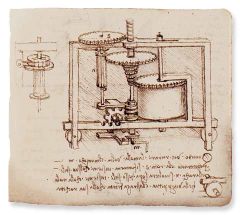
Patent
|
|
|
An economic indicator that measures the output per hour of work for non-farm business production.
|
Productivity
|
|
|
In U.S. history this rail connection with Atlantic coast with the Pacific coast.
|

transcontinental railroads
|
|
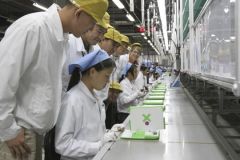
_____________ is the name given to the method of producing goods in large quantities at low cost per unit.
|
Mass Production
|
|
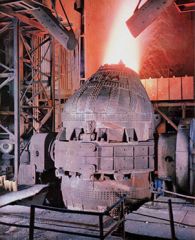
The most important technique for making steel in the nineteenth century?
|
Bessemer Process
|
|
|
Between 1860 – 1890 500,000 of these were isuued by __________ and Trademark office of the federal government for inventions such as phonograph, telephone, and typewriter.
|
Patent
|
|
|
The amount of goods and services created in a given period of time?
|
Productivity
|
|
|
This was completed when new rails were laid between Omaha, Nebraska, and Sacramento, California?
|
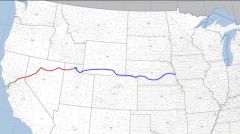
Transcontinental railroads
|
|
|
The Bessemer Process made it possible to ___________ ____________ steel, and this lead to anew age of building.
|
Mass Produce
|
|
|
The _____________ ____________ made it much easier and cheaper to remove impurities when making steel, and thus mass produce steel.
|
Bessemer Process
|
|

This concept of adaptation allowed Herbert Spencer to claim that the rich and powerful were better adapted to the social and economic climate of the time, and the concept of natural selection allowed him to argue that it was natural, normal, and proper for the strong to thrive at the expense of the weak.
|

Social Darwinism
|
|
|
Some ________ _________ in the 19th century (1800s) argued that governments should not interfere with human competition by attempting to regulate the economy or cure social ills such as poverty.
|
Social Darwinists
|
|
|
Economic condition in which there are so few suppliers of a particular product that one supplier’s actions significantly impact prices and supply.
|
Oligopoly
|
|
|
The market condition that exists when there are few sellers, as a result of which they can greatly influence price and other market factors.
|
Oligopoly
|
|
|
The exclusive control of a commodity or service in a particular market, or a control that makes possible the manipulation of prices.
|
Monopoly
|
|
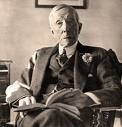
Rockefeller’s trust was a new kind of _____________ that controlled a high percentage of the nation’s oil refining capacity.
|

Monopoly
|
|
|
A combination of independent commercial or industrial enterprises designed to limit competition or fix prices
|
Cartel
|
|
|
Members of a ___________ could agree to limit production of a product to keep prices high.
|
Cartel
|
|
|
Absorption (come together) into a single firm of several firms involved in all aspects of a product's manufacture from raw materials to distribution
|
Vertical consolidation
|
|
|
Andrew Carnegie created a ____________ ______________ when he used his great wealth to buy the companies that preformed all phases of steel production, from the mines, mills, railroads and shipping lines.
|

Vertical consolidation
|
|
|
As production increases, the cost of producing each additional unit falls.
|

Economies of Scale
|
|
|
Carnegie’s vertical consolidation enabled him to lower the cost of production while production increased, a phenomenon known as ___________ __ ______________.
|
Economies of Scale
|
|
|
Absorption into a single firm of several firms involved in the same level of production and sharing resources at that level.
|
Horizontal consolidation
|
|
|
Rockefeller wanted to buy out his competitors that also refined oil and control that industry through a ________________ consolidation.
|
Horizontal consolidation
|
|

A law passed by congress in 1890 that was to limit the amount of control a business could have over an industry
|
Sherman Anti Trust Act.
|
|
|
This act was largely ineffective against trust and actually aided large corporations when it was successfully applied against labor unions.
|
Sherman Anti Trust Act.
|
|

His life was a true "rags to riches" story in the 19th century. Born to a poor Scottish family that immigrated to the United States, he became a powerful businessman and a leading force in the American steel industry.
|
Andrew Carnegie
|
|
|
This term is used to describe business leaders that successfully manipulated the government, ruthlessly drove their competitors to ruin, and paid workers meager wages while forcing them to work in dangerous unhealthy environments all in an effort to become extremely wealthy.
|
Robber barons
|
|
|
He was the guiding force behind the creation and development of the Standard Oil Company, which grew to dominate the oil industry and became one of the first big trusts in the United States, thus engendering much controversy and opposition regarding its business practices and form of organization.
|

John D. Rockefeller
|
|
|
A form of work where workers are paid by how much they produce, not the amount of time they work.
|
Piece work
|
|

A shop where people work long hours for low wages, and under poor working conditions.
|
Sweat Shop
|
|

He was a photo journalist and wrote several book about the horrors of child labor in the 19th century.
|
Jacob Riis
|
|
|
Social and economic doctrine that calls for public rather than private ownership or control of property and natural resources.
|
Socialism
|
|
|
Unlike the Knights of Labor the American Federation of Labor (AFL) was _______ union combining workers who are engaged in a particular craft or skill but who may work for various employers and at various locations.
|
Craft Union
|
|
|
___________ ____________is a type of negotiation used by employees to negotiate wages and working conditions with their employers.
|
Collective bargaining
|
|
|
Eugene Debs proposed this in 1877 for the railroads. It would organize workers from all crafts in a given industry.
|
Industrial unions
|
|
|
In 1893 he became president of the American Railway Union, the first effective industrial union in the United States.
|

Eugene V. Debs
|
|
|
Strikebreaker, person who works despite strike action.
|
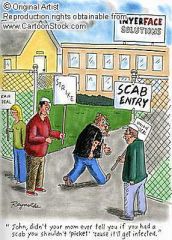
Scab
|
|
|
A group which opposes all government.
|

Anarchist
|
|

On May 4. 1886 union organizers clashed with the police and a riot ensued in which dozen on both sided died.
|
Hay Market Riot
|
|
|
This was bitter conflict in 1892 at a Carnegie steel plant in Homestead, Pennsylvania where striking workers were attacked by Pinkerton private police force.
|

Homestead Strike
|
|

This strike in 1894 set a pattern for future labor disputes after which courts would side with factory owners on the grounds the unions formed a trust.
|
Pullman Strike
|

